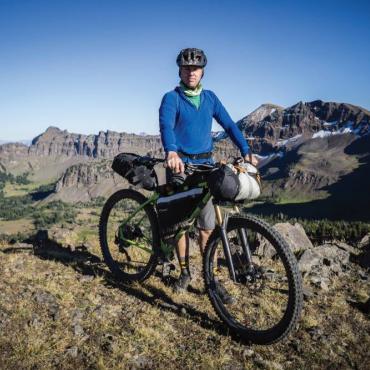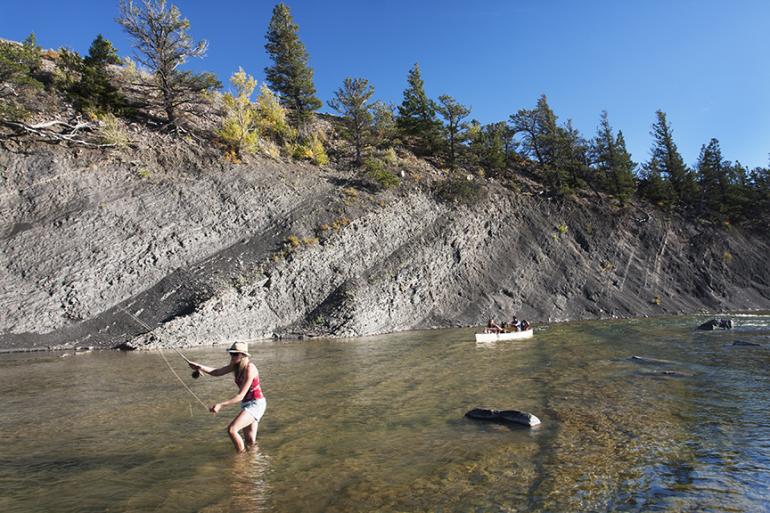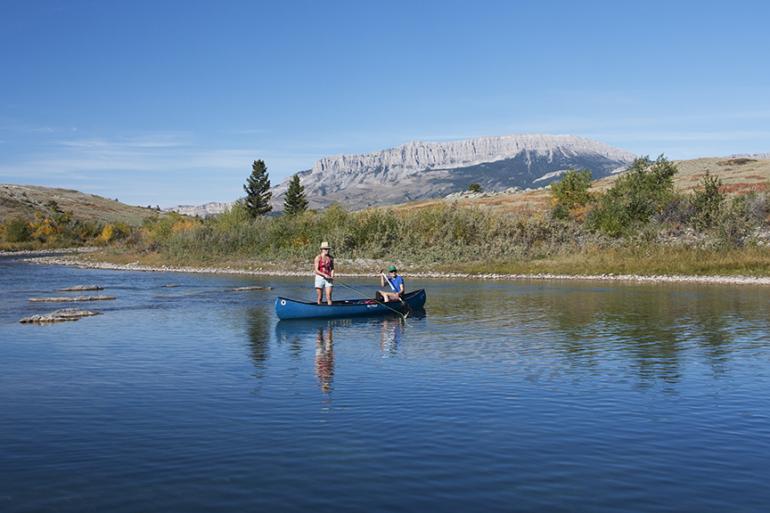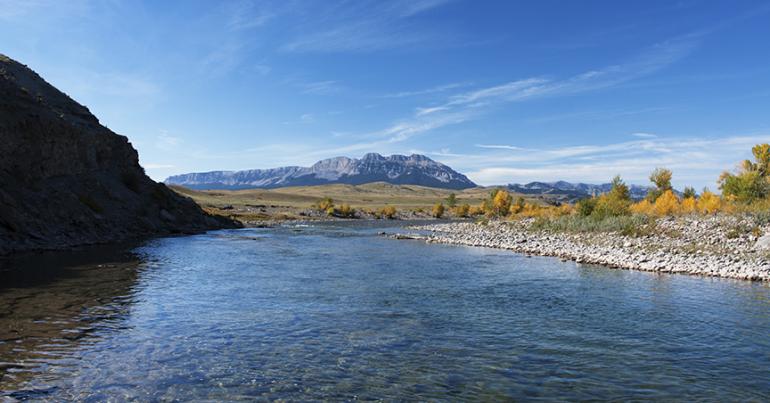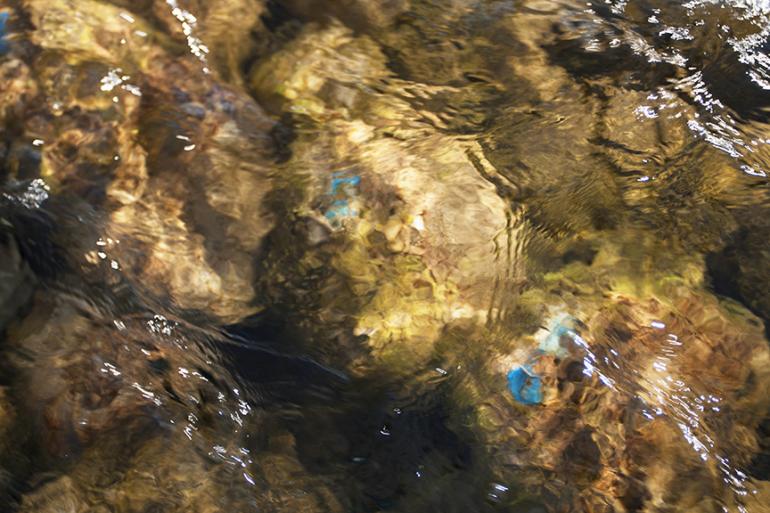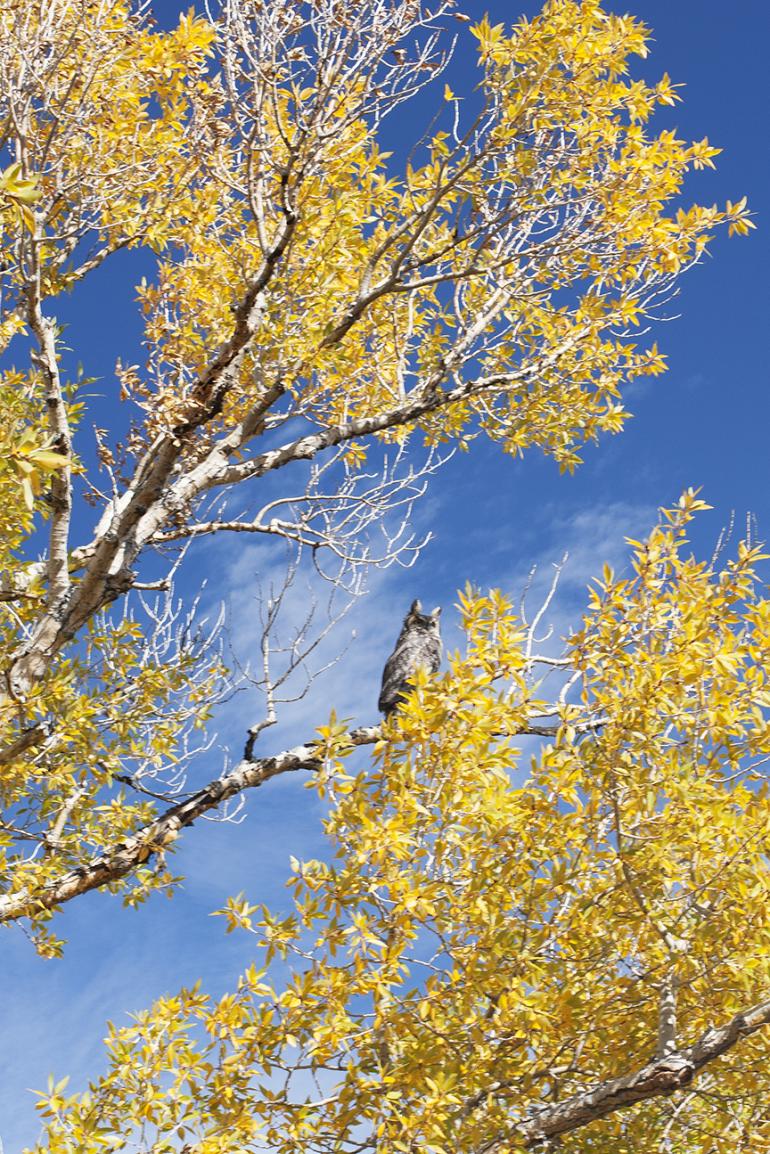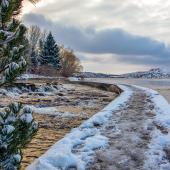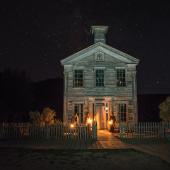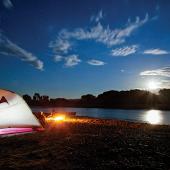Painting the Sun
The crystal-clear water hiccups on the bottom of our canoes as we push off. At the edge of the Bob Marshall Wilderness, we find ourselves bumping and scraping our way down the Sun River—painting rocks with our canoes as we meander through the brilliant geology of north-central Montana.
Spread across four canoes, there are eight friends that wanted a fall float trip but didn’t know where. With a handful of options around Montana, we decided on the Sun for no particular reason—we just wanted to be on the river.
It’s early autumn, so stretches with teeth-clenching whitewater have calmed to easy, bumpy flows, giving us an ideal Indian summer day on the river. Fall color is in full bloom, and the geologic surroundings that we woke up to have us in a trance as we flow through the landscape.
Over the next two days, this stretch of the Sun River will carry us 25 miles below the diversion dam where we put in. Since the dam was constructed in 1913, (“taming and bridling what was once a bronco of a river,” according to Paddling Montana), the 97-mile stretch of water below it continues to flow freely—undammed but not unaffected by mankind.
Long before it was the Sun, the Blackfoot Indians who called this area home referred to it as the Medicine River. It held unique significance to them and they defended it fiercely, since they believed the banks of the river had unusual mineral deposits that held significant medicinal qualities.
Approaching the first rapid, one of the canoes gets stuck sideways on a series of rocks. As the two paddlers jump into the water to move the craft, the force of the rapid tips the canoe, spilling precious provisions into the river. In the calm, clear pool below, we paddle around furiously chasing rogue brews only minutes into the trip.
It’s hard to focus on paddling with this landscape: multicolored rock and arid surroundings reminiscent of the desert Southwest. Geologic folds, towering sandstone formations, uplifts, and thrusts show us how this land came to be. Meandering east, everyone keeps staring back west, gazing at the beauty of the landscape of the Bob Marshall Wilderness. More than once, someone almost tips a canoe from distraction, their attention lost in the scenery.
The water is a clear emerald green. In some spots, rock reefs intersect the water forming incisive drops and ledges, stepping down into deep pools and swimming holes. On the upper section, the river bottom is made of bedrock that’s often smooth as a bathtub.
Along eddies and pools we pull off and cast lines, swim the clear waters, and watch wildlife. In one spot, we notice a beaver swimming across in front of us; we watch the creature play in the water and swim around its home, an elaborate structure made of downed trees. Just downstream, we come across an owl perched in a perfectly colored autumn aspen.
It seems surreal: the vastness of our home state is tangible at this moment as our heads turn in circles watching mountains fade in the background and the riverside geology transform with each stroke of the paddle.
With the evening light hanging low on the horizon, we pull off to the side of the river and set up camp. Along this stretch, there’s plenty of private land and you have to be cautious not to place your camp in the wrong spot, risking an unhappy landowner.
The next morning, resting peacefully in our tents, the sound of thundering hooves builds in the distance. We rush out to divert the stampeding cattle—luckily, they’re not as close as it sounded. Now fully awake, it’s time to break camp and get back on the water—we’re only halfway through our trip.
Much further from the mountain range backdrop of yesterday morning, we paddle on. The water is slower: fewer rapids and more flat water with low spots that require some strategy. The miles drag on and the surrounding landscape changes to open ranchland instead of mountains. We cascade down the remaining diversion dams that litter the lower part of this stretch.
“What the hell is that?” Someone from another canoe shouts, pointing downriver. Not far ahead, there’s a fence stretching bank to bank. The water is low enough that we can barely sneak the canoes underneath—walking on the river bottom and ducking beneath an electric cattle fence. “That’s not only illegal,” someone says, looking back at the wire death trap, “but it could have killed us. Who owns this land anyway?”
Although we enjoy the challenge, the lower water is problematic to navigate and we are almost always sure to knock off a few boulders on a given rapid—painting untold amounts of rock along the way with our boats as we cast and paddle further on down into the center of Montana. The slow-moving river widens more and more as it meanders through the rangeland, pulling further away from our beloved mountains and nearing the end of the stretch.
This is a piece of Montana that we have not seen until now, making us wonder what else is waiting to be found. How had we spent so much time in the Gallatin Valley with so much just beyond our immediate reach? When searching for a weekend float, we found a piece of paradise located just outside our own backyard. We learned that it pays to get out once in awhile and look around, that we might just like what we find out there—beyond Bozeman.

